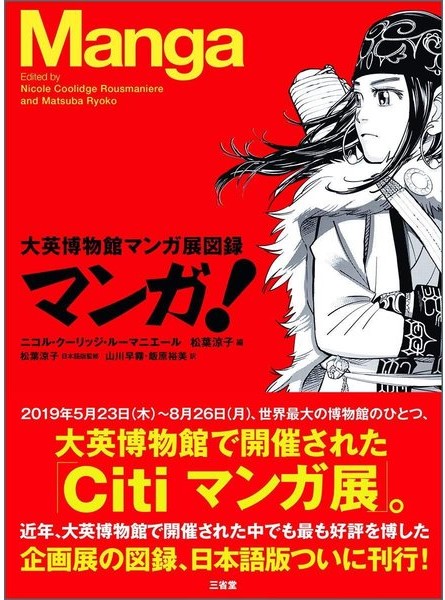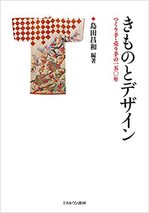活動報告
1
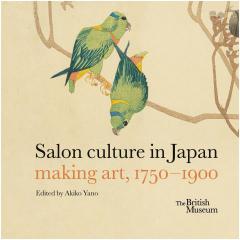
'Salon culture in Japan: making art, 1750−1900' (hardback)
by Akiko Yano (editor)
Publisher: British Museum Press
ISBN: 9780714124964
Number of pages: 256
Published: June 20, 2024
Full description:
Salon culture in Japan: making art, 1750-1900 celebrates the British Museum's rich collection of technically sophisticated artworks created as part of Japanese cultural salons in the late 18th and 19th centuries, featuring lively figures in daily life and festivals, elegant birds and flowers, ferocious animals, and lyrical landscapes.
This book accompanies the special 2024 display in the British Museum Mitsubishi Corporation Japanese Galleries, City life and salon culture in Tokyo and Osaka: 1770-1900.
In early modern Japan, cultural salons were creative spaces for people of all ages and social levels to pursue painting, poetry and other artistic endeavours, as serious but amateur practitioners. They all used a pen- or art-name. Individuals were therefore able to socialise and interact broadly through these artistic activities, regardless of official social status as regulated by the shogunal government. The idea of communal and collaborative creativity seems to have been especially ingrained around the area of Kyoto and Osaka. Each of the two cities had a distinct character: Kyoto was the national capital, where the emperor and aristocrats resided, and Osaka was the centre of commerce.
Only a fraction of these technically sophisticated artworks has previously been published in colour. With five essays by leading experts that explore this fascinating cultural phenomenon from different angles, and eight shorter insights that delve into specific historical aspects and the personal connections and legacies of cultural figures, this book offers a new perspective on Japanese art and society in the late 18th and 19th centuries.
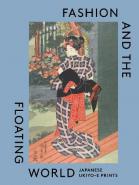
'Fashion and the Floating World: Japanese ukiyo-e Prints' (hardback)
by Anna Jackson (author), Masami Yamada (author)
Publisher: V & A Publishing
ISBN: 9781838510503
Number of pages: 240
Published: October 10, 2024
Full description:
This sumptuous book explores the important world that woodblock prints played in the fashionable world of Edo-period Japan (1603-1868). 140 ukiyo-e - 'pictures of the floating world' offer us a vivid view of the culture of entertainment, style and glamour that developed in bustling urban centres. Expert curators bring to life the scenes and figures depicted, and highlight the fashions, dress accessories and hairstyles shown in these colourful and compelling images by artists such as Utagawa Kunisada and Utagawa Hiroshige.
Benefitting from the V&A's world-leading collection and including many rarely seen prints, this is a fascinating glimpse into an exciting world of celebrity actors, courtesans, kimono retailers, fabric workshops, makeup brands, theatre managers, brothel keepers and restaurant owners.
マンガ! 大英博物館マンガ展図録 (Manga! The British Museum Manga Exhibition Catalog)
by Nicole Coolidge Rousmaniere (Editor), Matsuba Ryoko (Editor)
352 pages ISBN 978-4-385-16248-5
Published by Sanseido, November 20, 2020
3,500 Yen (+ tax)
The book "マンガ! 大英博物館マンガ展図録 (Manga! The British Museum Manga Exhibition Catalog), co-edited by Dr. Ryoko Matsuba (Senior Digital Humanities Officer, Sainsbury Institute for the Study of Japanese Arts and Cultures), a visiting collaborative researcher at the Art Research Center, has just been published.
This is the Japanese edition of the official catalog of the highly acclaimed The Citi exhibition Manga マンガ held at the British Museum in 2019. The book has a unique structure that crosses times, magazines, and publishers to provide a broad overview of manga as a culture.
With numerous illustrations, including original drawings of masterpieces, interviews with prominent manga artists and editors, and articles on art and historical perspectives, this is a book for manga fans.
External link: https://dictionary.sanseido-publ.co.jp/dict/ssd16248
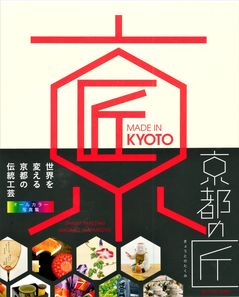
Edited by Shinya Maezaki and Masako Yamamoto
220 x182mm・160pages
ISBN 978-4-7946-0626-6
Published by IBC Publishing, July 3, 2020
3,500 Yen (+ tax)
The book "MADE IN KYOTO", edited by the ARC's Visiting Collaborative Researchers Shinya Maezaki (Associate Professor, Kyoto Women's University) and Masako Yamamoto (Part-time Lecturer, Ritsumeikan University), has been published.
Kyoto is home to renowned traditional handicrafts such as Kyoto ware and Nishijin-ori textile, as well as many tools and decorations used in traditional events at Shinto shrines and Buddhist temples such as the Gion Festival, by geishas on an everyday basis, or as part of the tea ceremony or flower arrangement. All of these are made at hundreds of workshops which are located in quiet residential streets or even at the end of narrow alleyways across Kyoto. Despite their existence, it is not easy to witness their work in progress firsthand and even residents of Kyoto may not know where and how they are created and where they can be purchased.
This book beautifully presents all the elements that make up superlative crafts with colorful photographs in Japanese and English - where and how they are made, the people who made them, and the materials and tools used to make them. The book also contains illustrations from Shui miyakomeishozu (拾遺都名所図会) and Miyakomeishozu (都名所図会) (in the ARC collection) which give us a glimpse of how the traditional handicrafts were a part of everyday life in Kyoto during the Edo period. While many things are lost and change forms in our ever-changing society, this book tells us that the search for "beauty" in Kyoto's traditional handicrafts will continue to live on.
The book contains the outcomes from the following research projects: "日本工芸における作品・工程のデジタル・アーカイブ" at the ARC, Ritsumeikan University, FY 2018 "学長採択型課題解決プロジェクト" at Kyoto Women's University, "京都工芸アーカイブ" at Archival Research Center, Kyoto City University of Arts.
External link: https://www.ibcpub.co.jp/photography/9784794606266.html
Kimono and Design: 150 Years of Makers and Sellers (in Japanese)
Edited by Masakazu Shimada
A5・236 pages
ISBN: 9784623088744
Published by Minerva Shobo, May 25, 2020
3,000 Yen (+ tax)
The book 『きものとデザイン: つくり手・売り手の150年 (Kimono and Design: 150 Years of Makers and Sellers) 』, which Prof. Keiko Suzuki (Art Research Center), Prof. Mari Yoshida (College of Business Administration) and Dr. Mizuho Kamo (the ARC's Visiting Collaborative Researcher) have each contributed a chapter to, has been published.
From the Edo period to the Showa period, the kimono industry had revitalized consumption by innovating with materials, designs and distribution in each era.
While exploring the background of these innovations, this book traces the changes in traditional Japanese clothing culture, the evolution of weaving machines and dyes that had been occurring concurrently, and the evolution of threads as a material.
Furthermore, the book reveals the consumer's preference for design in each era and explains in detail the cycle in which the creation of demand through the rise of retailers led to technological improvements and design innovations, which consequently led to new consumer behaviour.
This book has also been introduced in Newsweek Japan. For more information, please refer to:
https://www.newsweekjapan.jp/nippon/season2/2020/06/278762.php (in Japanese)
External link: https://www.minervashobo.co.jp/book/b506846.html
Amazon: https://amzn.to/3hGpBKt
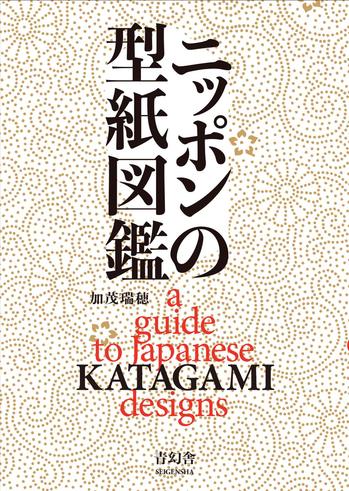
『A Guide to Japanese Katagami Designs』, written by the ARC's Visiting Collaborative Researcher Dr. Mizuho Kamo, has been published by SEIGENSHA Art Publishing. The book contains beautiful images of Japanese patterns and explanations about the designs suited for general readers.
You can read the introduction of the book written by the author by clicking the following link:
https://note.com/seigensha/n/n63ecd816a6d4 (Japanese only)
Published by SEIGENSHA Art Publishing, April 25, 2020
Japanese paperback book size, 336 pages
1,650 Yen
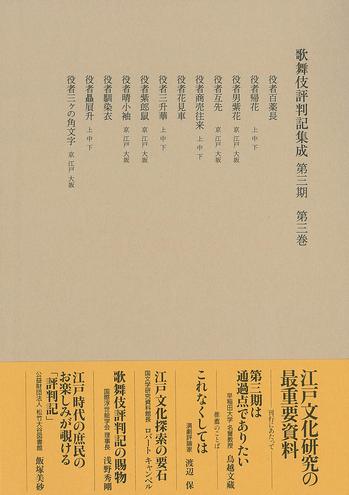
Collected Kabuki Hyobanki, Third Period, Volume 3: From An'ei 7 to An'ei 10
Edited by the Yakusha Hyobanki Publication Society
456 pages. ISBN: 978-4-7576-0946-4.
Published by IZUMI SHOIN, February 20, 2020.
¥16,500 (incl. tax)
Yakusha Hyobanki is a book of art reviews of Kabuki actors that has been published continuously for about 200 years from the mid-17th century and is an important resource for the study of Edo culture, including early modern theater, ukiyo-e, literature, language and publishing.
This collection, which transliterates the Yakusha Hyobanki based on a strict revision, has made a significant contribution to the progress of Kabuki research.
The third period continues to follow the principle of the second period and includes about 110 works from the An'ei era to the Kyouwa era.
The first volume, published earlier, covers the years from An'ei 2 to 4 and the second volume covers the years from An'ei 5 to 7.
_______________________________
Members of the Yakusha Hyobanki Publication Society:
Ryo Akama / Megumi Arai / Akira Ikeyama / Yoko Kaguraoka / Takaaki Kaneko / Masae Kurahashi / Yoko Kuroishi / Chie Saito / Katsura Sato / Mizuki Takusagawa / Takashi Noguchi / Kayano Mizuta / Shinya Mitsunobu
Advisors: Kyozo Takei / Mamoru Tsuchida / Bunzo Torigoe / Michio Hara / Yukio Hattori (deceased) / Hitoshi Matsuzaki (deceased)
External link: http://www.izumipb.co.jp/izumi/modules/bmc/detail.php?book_id=129622&prev=new


